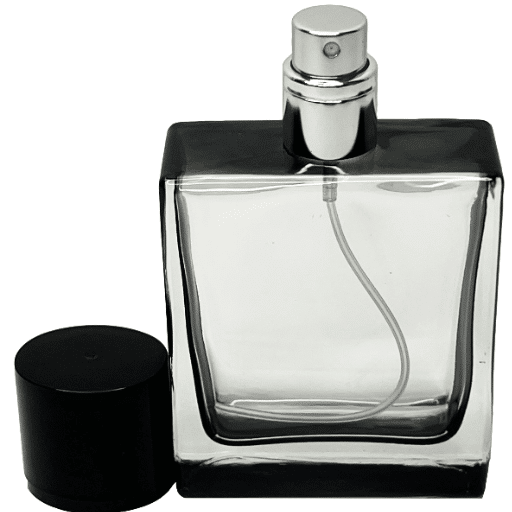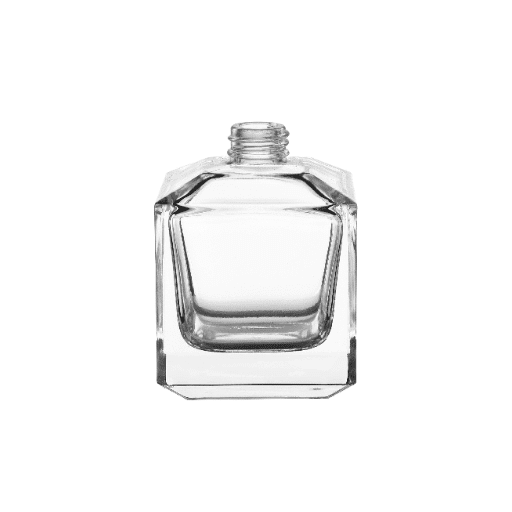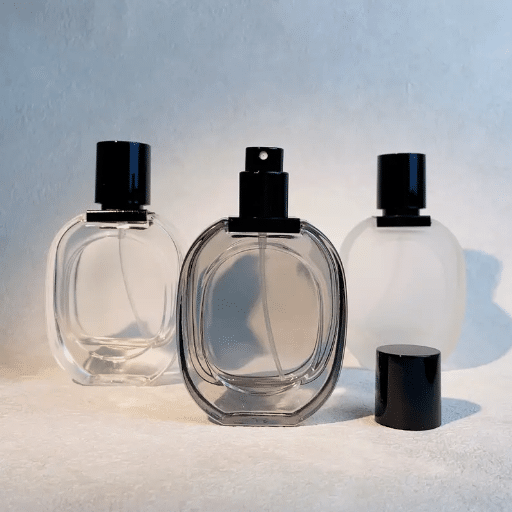In the Perfume field, two containers that ensure safe storage and administration of medications are ampoules and vials. Although they may bear resemblance, these two containers differ in design, and functionality, as well as in specific applications. Appreciating the differences between ampoules and vials not only illustrates their application particular to each container but also reinforces the value of preserving product integrity and safety for the patient. This article will address the major differences, benefits, and preferences for varying situations to aid understanding and informed decision-making. If you are a professional in the healthcare field, or are simply interested in the inner workings of these important tools, you are covered with the information provided in this article.
What Are the Key Differences Between Vials and Ampoules?
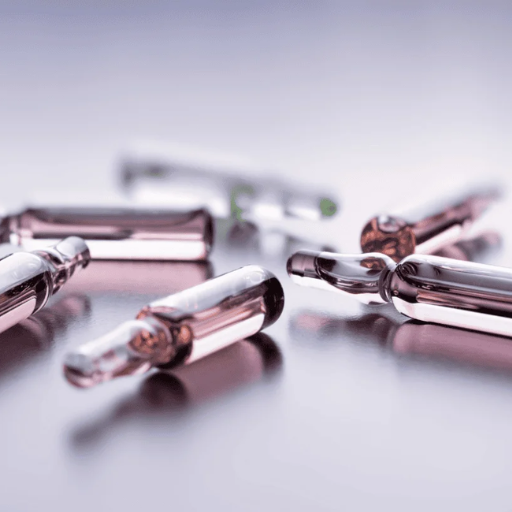
Ampoules and vials differ primarily in design, functionality, as well as usage. Vials are small, reusable bottles that contain a rubber stopper and a seal. Therefore, they can be used to store multiple dosages of liquid or powdered medications. They are multi-use and easy to access with a syringe, requiring no complicated methods and prolonged incursions. Unlike vials, ampoules are used to store single-use sealed glass containers which are more difficult to utilize. They must be snapped at the neck to access their insides.
These are used most often for single-dose medications as they guarantee maximum sterility because they are thrown away after one use. The selection of either vials or ampoules is most of the time dictated by the dosage needed, how it is stored, and how sterile it needs to be.
Container Design and Sealing Mechanisms: Stoppers vs Sealed Glass
The construction and sealing of vials and ampoules greatly impact their protective safety, sterility, and stability. Vials are usually capped with a crimped aluminum cap containing a rubber stopper which allows access to the medication via syringe multiple times. This design is best for multi-use medications and balances convenience with sterility during multiple uses. The rubber stopper acts as a seal from contamination and research shows that high-quality stoppers can maintain a vacuum seal with no air leaks in for a long time, and thus protect the contents from degradation.
Ampoules, or small sealed vials, are designed as single-use and exploit a glass of capsule design that is hermetically sealed. The glass neck is hermetically sealed which means the neck is an impenetrable barrier to the surrounding environment such as air and microorganisms. During use, the neck of the ampoule must be broken which allows access to the content within the ampoule. The design gives no opportunity for contamination during storage. However, the removal of the ampoule’s neck is required to retrieve the glass container which presents the opportunity for contamination through glass shavings. Research has shown that sealed glass ampoules are the most sterile and are often used for sensitive perfume formulations or highly reactive compounds.
The efficiency of these methods varies in accordance to the intended purpose. For instance, medications requiring repeated dosing over time are best suited with vials with stoppers, but sealed ampoules are perfect when a single dose is needed and purity requirements are high. Both systems demonstrate progress in perfume packaging. Contamination, along with material quality, regulating standards of safety, efficacy, and di are the main focus for ever-evolving innovations.
Single-dose ampoules vs Multiple-Dose Vials
Each single-dose ampoule and multiple-dose vials have their own distinct features tailored to specific clinical needs. A single-dose ampoule stores a pre-measured medication intended for one-time use. Roughly crafted from glass, single-use ampoules offer robust protection against environmental factors such as air and moisture which might reduce the effectiveness of the medication over time. According to current studies, single-dose ampoules are vital for certain anesthetic medications and vaccines that are sensitive sip microbial contamination at both stored and used locations. The risk of contamination in the used location is mitigated as the ampoule is discarded after use.
Multiple-dose vials are designed to enable the withdrawal of several doses from a single container. These vials are often furnished with a rubber stopper that allows repeated needle punctures for medication withdrawal, making them economical for use in healthcare settings. The sturdy feature allows these vials to be cost-efficient in cases where a single medication is used for multiple patients over an extensive timeframe. As each attempt increases the potential dilution of the sterility risk whole holding the medication, modern advancements have introduced preservatives in many multiple-dose vial formulations to make this risk obsolete by ensuring the medication is safe for unmonitored exposure.
In terms of economic evaluation, multi-dose vials offer greater value than their single-dose counterparts, especially with large-scale immunization drives. However, single-dose ampoules dominate in areas where absolute sterility and precision are critical such as in surgery and emergency medicine where the risk of cross-contamination must be mitigated. Both systems demonstrate how valued their respective strengths are in healthcare, and their ability to serve diverse perfume and logistical needs.
Reusability: Why Ampoules Cannot Be Reused
Ampoules are intended as single-use containers to maintain the highest sterility standards along with maximal patient safety. After breaking the seal of an ampoule, the contents are irreversibly sealed so they cannot be guaranteed sterile for future uses. Research has pointed out the dangers of using contaminated, improperly sealed, or reused ampoules which can cause life-threatening infections. In the provided guidelines for healthcare, an ampoule should not be re-used for any purpose even if a sealed cap is placed back on it due to exposure notorious for microbial and non-biological contaminants.
Moreover, the common choice of material for ampoules is glass, whose sharp, irreparably broken edges are created by snapping the top off to access the medication. This form eliminates the possibility of spillage and ensures accurate dosage without cross-contamination. Evidence indicates insufficient management of opened ampoules is responsible for a significant amount of contamination-associated complications in several healthcare environments. Hence, by safety guidelines, ampoules are specifically designed as one-time use vessels to safeguard patients and the perfume system while preserving the system’s integrity.
How Are Vials and Ampoules Made and What Materials Are Used?
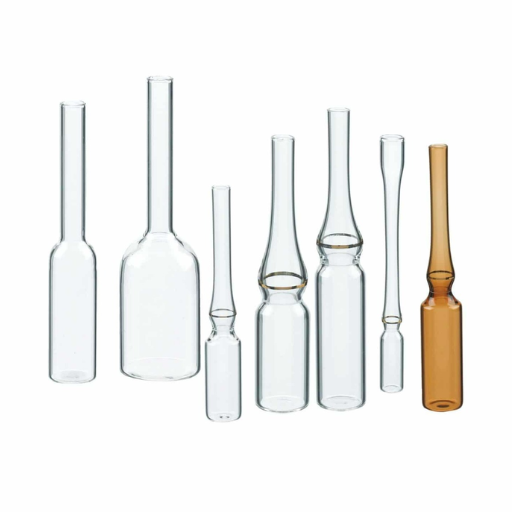
Vials and ampoules are usually manufactured from plastic or glass materials; however, glass is most prominent because of its inert nature and strength. The glass or plastic vials are shaped into their final forms via sterilization using a molding or tubing method. In the case of ampoules, the objective is to create a single-use sealed container. Sealing of ampoules is done using a heat process which melts the glass to seal it off completely. The both vials and ampoules production processes ensure sterility, integrity, and other perfume or perfume requirements.
Glass Vials vs Glass Ampoules: Manufacturing Differences
Despite the fact that vials and ampoules have similar functions in the perfume industry, their methods of production differ greatly. Glass vials are mostly produced using borosilicate and soda-lime glasses which are known for their strength, heat resistance, and inertness to chemical reaction. Glass vials are produced using a combination of diametric and iso metric steam molding alongside diaform and isoform tubing which makes glass ampoules of distinct shapes and sizes. The uniformity of scale and shape is achieved through automation, where advanced equipment cuts, forms, and anneals vials that meets the prerequisites for multiple uses or dosages.
On the contrary, ampoules demand a more specialized technique in manufacturing to guarantee they are single-use. Ampoules are made from tubular glass, where the step of heating and shaping the glass into sealed containers has to be done using highly accurate equipment. A crucial part of the operation is tip forming, in which the open end of the ampoule is drawn out and sealed after filling. This sealing can be done by either flame sealing or one of the pull-seal methods which guarantees an airtight space preserving sterility and quality of the content. Stringent control is indispensable, especially when modern inspection systems with cameras and other sensors to check for precision defects on the glass are used.
Practically, ampoules have an upper hand in guaranteeing sterility for single use and lessen contamination for use multifrequency, while vials are better for use multi-dose and can be reused pending proper sterilization. The introduction of some tru technologies such as laser inspection systems of glass and high-speed glass forming machines are boosting the dependability and efficacy of the processes done to the vessels, even the exacting perfume requirements.
Plastic Vials: When Are They Preferred Over Glass?
Because of distinct benefits that plastic vials possess over conventional glass vials, they are gaining popularity in the perfume and healthcare sectors. One plastic vials benefit, especially for the perfume sector, is the highly plastic vials… to temperature fluctuations, physical stress, and impact. Also, since plastic vials are lighter, they are easier to transport. Hence, shipping costs are lower, which is an advantage for perfume companies that need to manage large quantities of these products.
The ability to securely store a wide range of perfume including biologics and sensitive formulations has become easier through new research in polymers and their chemical COP-resistant plastic materials. Studies show COP plastic vials has complex drug compound storage with low extractable and leachable values. Furthermore, these plastic vials are especially suitable for prefilled and single-dose syringes and other single-dose applications where the risk of contamination is most critical.
Another critical aspect is the compatibility of plastic vials with the increasing freeze-drying processes in biologics manufacturing. Studies indicate that custom-made plastic vials have a greater resistance to thermal stresses during lyophilization in comparison to traditional glass vials. Moreover, their ability to be reused and manufactured from bio-based plastics makes them more appealing to certain businesses.
After resolving problems associated with breakage, weight, and chemical incompatibility, plastic vials emerge as a viable option in cases where safety, sustainability, and effectiveness are prioritized.
How Cylindrical Containers Are Designed for Perfume Use
Safety and hygiene requirements in the perfume field necessitate tailor-made cylindrical containers that ensure appropriate perfume grades of safety. As such, these containers are generally manufactured from glass or other plastic materials of higher grade and ISO 80369 elucidated in perfume standards ASTM claimed, ensuring biocompatibility and unparalleled safety for the patients.
The later outlined design incorporates leak-free airtight seals which chiefly serve in maintaining sterility while preventing contents from outside contamination. Along with this, the manufacturers mark out easier-to-use ergonomic grips alongside measure divisions in graduations marked out for easy reference and precise usage of medicare staff and professionals. The degree of precision and accuracy required for perfume devices and dispensing systems is achieved through Advanced techniques of production such as Injection and blow molding.
As projection status shows, the world cylindrical perfume container market is believed to be expanding due to the consistent demand in safe and sustainable packaging. For instance, surgical packaging will reach more than 40 billion dollars within 5 years suggesting an annual increase of 6.5%. Part of the reason for increased demand is the ease of use and sustainability these kinds of containers are made with, although they help reduce the carbon footprint the perfume field exposes the environment to.
Through the integration of design, innovative features, precise workmanship, and caring for the environment, cylindrical containers showcase their significance in supporting contemporary healthcare structures. They balance the need for safety with a shift towards more environmentally friendly practices.
What Are the Advantages and Disadvantages of Using Ampoules?
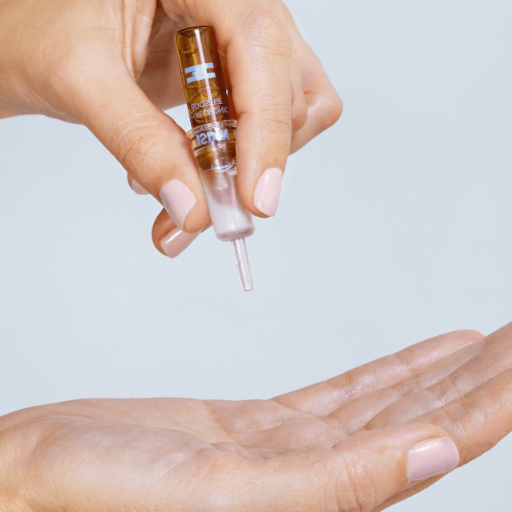
Advantages of Ampoules:
- Ampoules provide a completely sealed, sterile environment, reducing the risk of contamination.
- They are made of glass, which is inert and offers excellent chemical stability, ensuring the integrity of the contents.
- Ampoules are single-use, which minimizes waste and simplifies dosing in many perfume applications.
Disadvantages of Ampoules:
- They can be fragile and prone to breaking, requiring careful handling and storage.
- Opening ampoules can sometimes lead to the risk of glass particle contamination if not done correctly.
- Compared to other containers, they can be more expensive to produce and use due to the intricate sealing process.
Sterility Benefits: How Ampoules Prevent Contamination
Ampoules are used in the perfume and perfume industries because they can maintain sterility and prevent contamination as no other package can. Their hermetically sealed design guarantees that the contents will be free from any external contamination until the moment of use. The airtight seal eliminates access to air, moisture, and even microorganisms making microbial growth, content degradation, or bacterial infections highly unlikely. Studies suggest that ampoules maintain sterility much more effectively than other packaging methods because there is no risk of resealing or container reuse.
Ampoules are glass, so they do not chemically interact with the contents. Therefore, sensitive compounds like vaccines, injectable medicines, and laboratory reagents are preserved. Modern technology has also improved their sterility advantages. For example, sterilization of the ampoules individually with the automated filling system guarantees a sealed sterile environment for the whole filling process which eliminates any possible staffing intervention with the process. Such a level of sterility is highly required in hospital settings and during biologics preparations because even minimal contaminations can affect the procedures greatly.
Risk of Injury When Opening Glass Ampoules
Opening glass ampoules is particularly risky when it comes to injury, especially cuts and lacerations due to sharp edges or improper technique. Research has revealed that injuries while breaking ampoules as part of healthcare procedures is common, and it is estimated that about 30% of perfume staff will sustain some form of injury during their career. Some of the common reasons include lack of proper training on the opening method, too much violence to the neck of the ampoule, or absence of protective devices such as gauze and ampoule openers. The injuries of this type range from trivial bleeding and discomfort to much more serious injuries such as infection or contact with dangerous materials locked in the ampoule. To reduce these risks, a lot of perfume institutions recommend the use of protective devices and constant instruction on safe handling routines. Also, other measures have been taken to protect the possibility of injury, like pre-etched ampoules or glass ampoules covered with plastic.
Storage of Unstable Chemical Compounds in Ampoules
To maintain their integrity and prevent unwanted reactions with processes such as air, water, and contaminations, unstable chemical compounds are often stored in ampoules. These containers ensure these sensitive substances remain stable under controlled conditions. Cold temperatures, refrigeration, or even cryogenic storage are essential for the preservation of many compounds, such as unstable chemicals that require refrigeration. Most of the perishable compounds, including certain perfume , can be stored at temperatures as low as set at -80 degrees Celsius.
Moreover, the usage of inert gases like argon or nitrogen is effective for reducing oxygen exposure within sealed ampoules, which could cause oxidation or deterioration. Storing volatile and light-sensitive substances in dark or UV-protected ampoules is another effective approach since these types of containers reduce exposure to photodegradation, thus extending the shelf life of these substances.
Like everything else, the proper marking of ampoules is essential. This ensures the proper recognition of dangerous substances and stipulates safe storage and handling. Another consequence of the advancement of materials science is the innovation of ampoules themselves. A notable example is the high-quality borosilicate glass, which is very resistant to thermal shocks and sterilization processes because of its unique quality. In tandem, these measures establish a strong system for keeping extremely unstable chemicals as the scientific and perfume fields would most certainly require them to ensure their usability.
What Are the Advantages and Disadvantages of Using Vials?
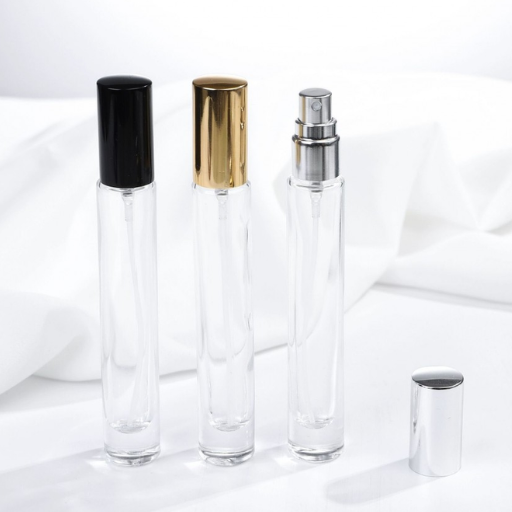
Vials have numerous benefits as containers to be used for storing liquids, powders, and other substances. For one, they are more resistant to breaking than ampoules which is quite the relief when handling and transporting them. Also, vials can be constructed from either glass or plastic which makes them easily adaptable to different needs. Moreover, vials come in an array of sizes and materials making them ultra-versatile. Lastly, vials are routinely manufactured with resealable caps and stoppers which decreases waste as they can be used multiple times.
Yet, like everything else these vials too have their flaws. For one, the possibility of contamination increases with a resealable design if not handled with absolute care. After some time, the quality of the contents may be compromised due to the interaction of certain chemicals with the container depending on its material. Lastly, for one-time use, vials unlike ampoules might not be the most economical choice.
Rubber Stoppers and Screw Caps: Accessing Contents Safely
Rubber bungs, just like screw caps, ensure that the vials and containers are safe, intact, and useable. They help ensure sterility and avert contamination since rubber stoppers provide an airtight seal. Rubber stoppers are put together using butyl or silicone rubber. These materials are useful for stoppers because they are durable and have low reactivity with chemicals. Rubber stoppers are easier as they can be accessed through syringes without needing to uncover the entire bung. This makes contamination from outside environments a lot harder.
Rubber stoppers also protect the container from damage because they are paired with other materials such as polypropylene or metal alloys. Screw caps, unlike bung stoppers, enable easy access to open and reseal. This junction is nearly always put together with a tamper-evident feature which is useful and lets the user know if the vessel had been opened before. This screw cap feature make lockdown easier by thwarting unauthorized access to the cap.
Numerous studies emphasize the impact of these closure systems. As an example, strong rubber stoppers can reduce microbial contamination risk by 97% compared to lower-grade stoppers. In the same way, consumer surveys report screw caps with tamper-evident technology increasing product safety trust by over 85%. These findings underscore different industries, including healthcare, food, and beverage, needing protective and sensitive closing mechanisms.
Vials for Multiple Doses: Practicality in Perfume Settings
The multiple dose vials are a clear example of contemporary medicine as they successfully store and dispense medications for multiple patients or procedures. These vials, constructed from innovative materials, come with sterile protective barriers to maintain stability and enhance shelf life. A healthcare industry report claims multiple dose vials reduce perfume waste by 30% compared to single-use vials, adding a positive cost and environmental impact.
The usefulness of these vials is additionally increased by their compatibility with aseptic techniques and tamper-evident seals which safeguard the medications from tampering and contamination. Their value is significantly high in situations like vaccination drives where quick and sustained access to injectable medication is obtainable. Furthermore, multi-dose vials are often fitted with stickers indicating the shelf-life and appropriate storage conditions to aid the users. Due to their reliability and convenience, these vials are a vital component in the most accessible and effective care across the world.
How Vials Are Best for Stable Perfume Compounds
Vials work best for stable perfume compounds because they offer a protective atmosphere and a clean environment that preserves the integrity of the perfume . Their strong materials, along with an airtight seal, make it impossible for contamination to take place. This means that the perfume also does not undergo any changes in composition over time which makes vials ideal for long-term storage and transportation.
When Should You Use Vials vs Ampoules in the Perfume Industry?
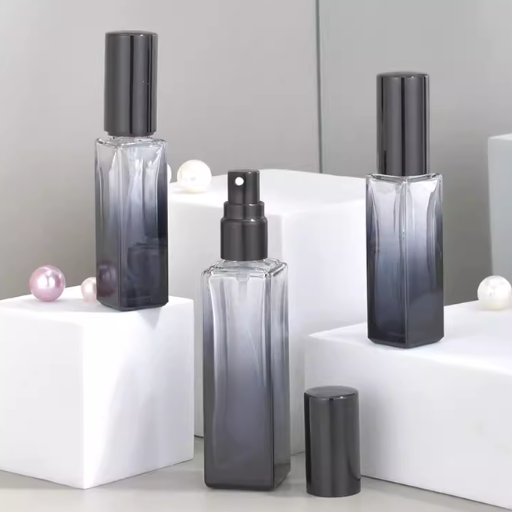
Vials are exceptionally convenient for the storage and transportation of large quantities of perfume because they are durable, cost-effective, and reusable. In addition to long-term storage or storage sample distribution, vials protect against contamination and evaporation of the content.
On the opposite end, ampoules are best used for single-use applications or where preserving the purity of smaller batches is of utmost importance. The encased design allows the perfume to remain uncontaminated until opened which is advantageous for sensitive or high-value formulations.
Perfume Formulation and Storage Considerations for Vials and Ampoules
There are multiple factors to consider when choosing between vials and ampoules that pertain to formulation and storage in order to protect the product’s quality, integrity, and longevity. Regarding vials, their practicality and ease of use is extremely notable for commercial perfumes where sampling and multiple uses are required. The glass or plastic material is case coated or treated with a material that blocks UV rays which is vital for guard against light-sensitive ingredients in the perfume. Certain scent notes may be degraded when exposed to sunlight and certain floral and citrus elements are especially susceptible. Using dark or amber-toned vials helps mitigate these risks substantially.
Ampoules are specifically designed for sterility and long-term preservation. Their use is common in haute perfumery or for research purposes where even the slightest contamination can alter the fragrance profile. The ampoule’s sealed nature guarantees a completely airtight structure. This degree of protection is crucial for formulations containing rare or volatile ingredients like certain aldehydes and natural extracts, which deteriorate when reacting with oxygen. Research indicates that the sealed design of ampoules greatly decreases oxidation in comparison to screw-cap containers. Furthermore, the storage analytical studies benefit greatly from ampoules because the original composition of the perfume is preserved unadulterated.
Preserving the stability of perfumes also great impacts their temperature. Both vials and ampoules should be stored at a constant temperature of 15-20°C (59-68°F) to reduce the chances of evaporation and chemical degradation, while also preventing excessive humidity. For high-value formulations, controlling the surrounding humidity can further protect the raw materials. Adopting such guidelines considerably improves product shelf life and ensures that the intended characteristics of the perfume are preserved.
Choosing the Right Container for Perfume: Vials vs. Ampoules
Vials and Ampoules: A Comprehensive Breakdown
In the case of perfume containers, it is important to compare the features, strengths, and weaknesses of vials and ampoules in order to make the right choice. Compared to one another, both have their advantages and the intricacies of each have a bearing on both the quality and shelf life of the perfume.
Vials
Vials have become somewhat of a staple in the perfume industry owing to their flexibility, ease of use which makes them practical, and wide availability. Vials are made of either glass or polymer plastic and now even high-end boutiques are offering sample vials of 1ml. Larger vials of 10ml are used extensively by manufacturers and retailers. The inert nature of glass makes it preferable when storing reactive perfumes because glass does not interact with the chemicals inside. Certain vials are fitted with side screw caps, others with stopper lids or even spray heads to facilitate ease of access to the perfume and application during multiple uses for the vial. The vial must also be transparent so that the consumer can check either the quantity of perfume contained in the vial or the color and clarity of the perfume.
To manufacture vials in bulk is generally more economical than other types of production, which increases their cost effectiveness. This makes vials ideal for casual fragrance sampling campaigns, product testing, and even long term use. However, frequent use of these vials can be hindered due to subpar sealing which increases exposure to moisture and air. This makes storing highly sensitive fragrances unsuitable.
Ampoules
Unlike vials, ampoules are glass containers that are completely sealed to provide maximum protection against external matter. These small, single-use containers can only be accessed by breaking the neck. In addition to this, ampoules also help to maintain the integrity of perfumes by storing them without the risk of air, contamination, or evaporation which would otherwise alter the original formulation of the scent.
Limited edition perfumes that have undergone extensive research and development are ideal for storage in ampoules due to their high product quality. Vials, by comparison, cost less due to the ease of use and multiplicative nature of bulk production. However, their single-use nature makes ampoules much more costly as well as lacking the specialized production equipment needed which greatly reduces their market adaptability.
Important Information About Usage Trends
The demand for ampoules in the luxury and niche fragrance sectors seems to be on the rise, as they reinforce the prestige positioning and mark quality assurance. At the same time, vials retain their stronghold on sampling and the mass distribution market due to their low-cost and functional nature. As per the gathered data, the global market for perfume sample packaging (vials and ampoules) is projected to expand at a rate of more than five percent annually over the next decade as a result of heightened consumer demand for personalized and quality fragrances.
Ampoule Vs Vial: The Dilemma
The decision of vials or ampoules largely revolves around the usage purpose of the fragrance, audience demographic, and budgetary aspects of the project. Vials are appropriate for wider application and have a lower cost, while ampoules serve very specialized, high-end applications where quality control is paramount. With proper consideration of both trends and goals, businesses can make more suitable decisions regarding the selection of packaging types based on the differing advantages of each individual container type.
Maintaining Fragrance Integrity: Best Practices for Vials and Ampoules in Perfumery
Guarding fragrance integrity and quality is very important when selecting packaging for perfume. Both vials and ampoules must protect the fragrance from light, heat, and air as these factors increase the degradation of the fragrance.
For vials, UV coated glass does protect against the reduction of light degradation. It has been shown that fragrances kept under artificial lights for long durations can lose as much as seventy percent of their olfactory attributes. Furthermore, the use of airtight screw-top caps or sprayed lids prevents oxygen exposure, which further aids in aroma preservation.
Ampoules are made of laboratory grade glass, which is far more suited for long-term storage due to its high resistance to chemical reaction. Single-use ampoules provide ideal sealing by means of flame or ultrasonic sealing, and since these have very low evaporation and contamination rates, they are able to maintain fragrance stability over an extended period of time. Research indicates that after twelve months, ampoules are able to retain almost all their original potency; up to 99 percent.
Furthermore, companies that utilize nitrogen blanketing during the filling process can improve the shelf life of vials and ampoules substantially. This technique lowers oxygen concentration in the packaging which helps prevent oxidation.
Following these recommendations, alongside the rest of the industry’s evolving standards for packaging, will help perfumery brands reduce fragrance degradation while delivering a consistent scent experience to their consumers.
Reference Sources
I found some studies related to ampoules and vials, their differences, and applications. Here are the highlights:
-
INTERNATIONAL JOURNAL OF RESEARCH IN PHARMACEUTICAL SCIENCES:
- Discusses innovations in ampoule and vial designs, such as SafeCutTM OPC ampoules and SafeBreaKTM color ampoules.
- Highlights the use of single-dose vials in medical devices.
- Focuses on safety and usability improvements in pharmaceutical packaging.
-
Why do Anesthesiologists Drug Administration Errors?:
- Explores errors in drug administration related to ampoules and vials.
- Examines factors like unfamiliarity with packaging and design differences.
- Provides insights into the impact of packaging on medical practice.
-
Development of a process to clean the outside of the closed injectable ampoules:
- Focuses on cleaning processes for injectable ampoules.
- Discusses applications for liquid loads, including prefilled syringes and vials.
- Highlights the importance of maintaining sterility and cleanliness in pharmaceutical packaging.
If you’d like, I can delve deeper into any of these studies or refine the search further. Let me know!
Frequently Asked Questions (FAQs)
Q: What are the main differences between an ampoule and a vial?
A: An ampoule is a small sealed glass container used to store and protect its liquid contents from air and contaminants, whereas a vial is a small cylindrical container that can carry multiple doses and is often sealed with a rubber stopper or screw cap. The primary difference lies in their usage and sealing mechanism: ampoules are generally single-use and must be broken to access the contents, while vials can be resealed and reused.
Q: How are ampoules and vials used in perfume applications?
A: Ampoules and vials are used to store drugs and biological samples. Ampoules are usually used for single-dose applications, particularly for intravenous injections, to ensure that the contents inside remain uncontaminated. Vials are often used to store stable substances that need to be accessed multiple times, as they can be resealed after opening.
Q: What materials are ampules and vials commonly made of?
A: Ampules and vials are commonly made of glass, although some vials may also be made of plastic. Glass is preferred for its inert properties, which prevent reactions with the contents inside.
Q: Why are ampoules generally smaller in size compared to vials?
A: Ampoules are generally smaller in size because they are designed for single-use applications, typically containing a precise, measured dose of medication or substance. This ensures that the entire content is used at once, reducing the risk of contamination.
Q: Can ampoules be reused after opening?
A: No, ampoules cannot be reused after opening. An ampoule is sealed, and once opened, by breaking the neck of an ampoule, the contents are exposed to oxygen and contaminants. Therefore, they are designed for single use only.
Q: Are vials used to store both liquid and solid substances?
A: Yes, vials can be used to store both liquid and solid substances. They are versatile sealed containers or vials that can be sterilized and resealed, making them suitable for a variety of applications.
Q: How do you access the contents inside an ampoule?
A: To access the contents inside an ampoule, the top part of the ampoule must be snapped off at the neck of an ampoule. This breaking action opens the ampoule, allowing the liquid inside to be accessed or withdrawn using a syringe.
Q: What precautions should be taken when handling ampoules?
A: When handling ampoules, it is important to use protective gloves to prevent injury from broken glass and to ensure the sterile contents inside the ampoule are not contaminated. Care should be taken to apply gentle pressure at the neck of the ampoule to avoid splintering the glass.
Q: Why might a sealed vial be preferred over an ampule for certain applications?
A: A sealed vial might be preferred over an ampule when there is a need to store stable substances that require multiple doses. Vials can be resealed after each use, maintaining the sterility and stability of the contents, whereas ampoules are single-use and must be discarded after opening.

